I know it is to protect sensitive load, but doesn't the zener diode in the power supply already do that? zener diode inside the power supply already limits the voltage to its breakdown voltage. Why do we need to short the powersupply in order to protect the load?

Asked
Active
Viewed 234 times
0
across
- 1,100
- 11
- 25
-
1Crowbar can protect many amps, zeners are relatively low current. And who knows if the power supply even provides overvoltage protection? – Mar 15 '20 at 16:45
-
Ah zener diode can only take mA, but scr can easily take tens of amps. Makes sense. Thank you so much:) – across Mar 15 '20 at 16:48
-
1See [what-happens-after-a-zener-diode-breaks-down](https://electronics.stackexchange.com/questions/27264/what-happens-after-a-zener-diode-breaks-down/208772#208772). – Transistor Mar 15 '20 at 16:53
1 Answers
1
SCR Crowbars are usually used in systems which should interrupt permanently the normal operation in case of a fault (e.g. Over voltage). In you circuit, the normal operation of the circuit should be permanent interrupted if large abnormal over-voltage transients arise in the load side. In this case, the crowbar makes sure that the power supply's output is short circuited, and its input fuse is blown, thus interrupting the flow of the current.
vtolentino
- 3,529
- 1
- 7
- 17
-
The Zener on its own will not protect against overload due to the presence of R which will have a voltage drop across it proportional to the Zener current. This would allow the rail voltage to increase beyond the design value. In the circuit arrangement shown the SCR will trigger as soon as the Zener knee voltage is exceeded. – Transistor Mar 15 '20 at 16:50
-
You're right @Transitor. That was a misleading point and I should've properly checked the position of the zener diode. However, for this same constellation, since the output power of the power supply is limited, part of the current would still be steered through the zener. So, indirectly, the output current would be limited. Not the correct and recommended way of implementing a safety mechanism though. :-) – vtolentino Mar 15 '20 at 17:10
-
No problem. See my linked answer above and the link inside it for more. – Transistor Mar 15 '20 at 17:14